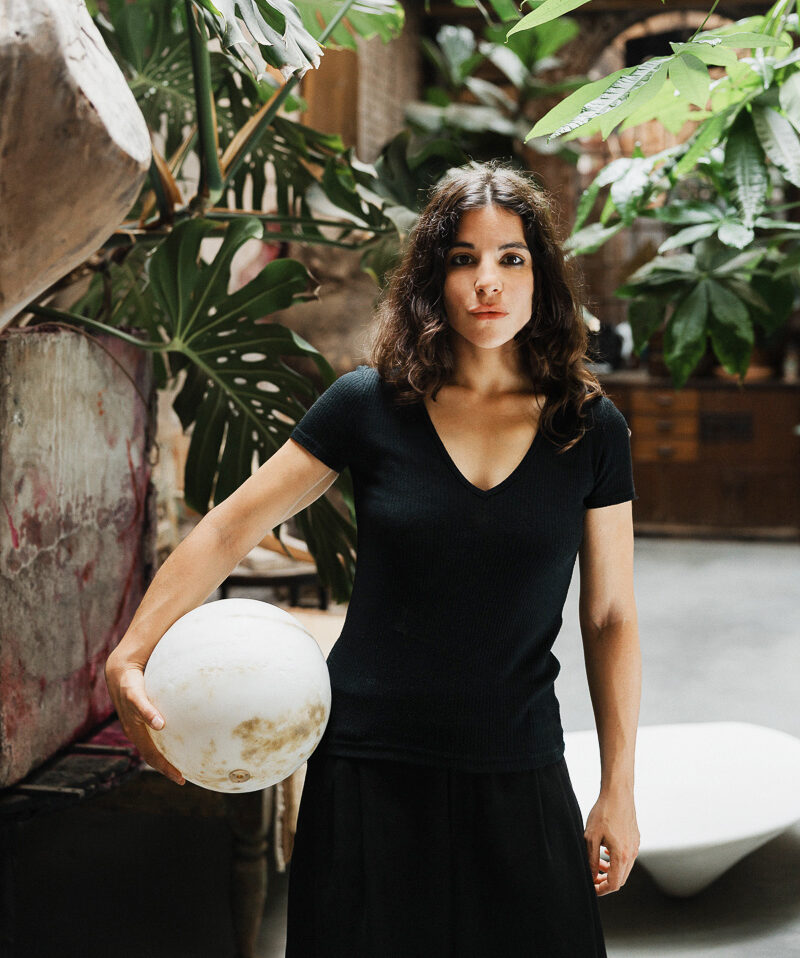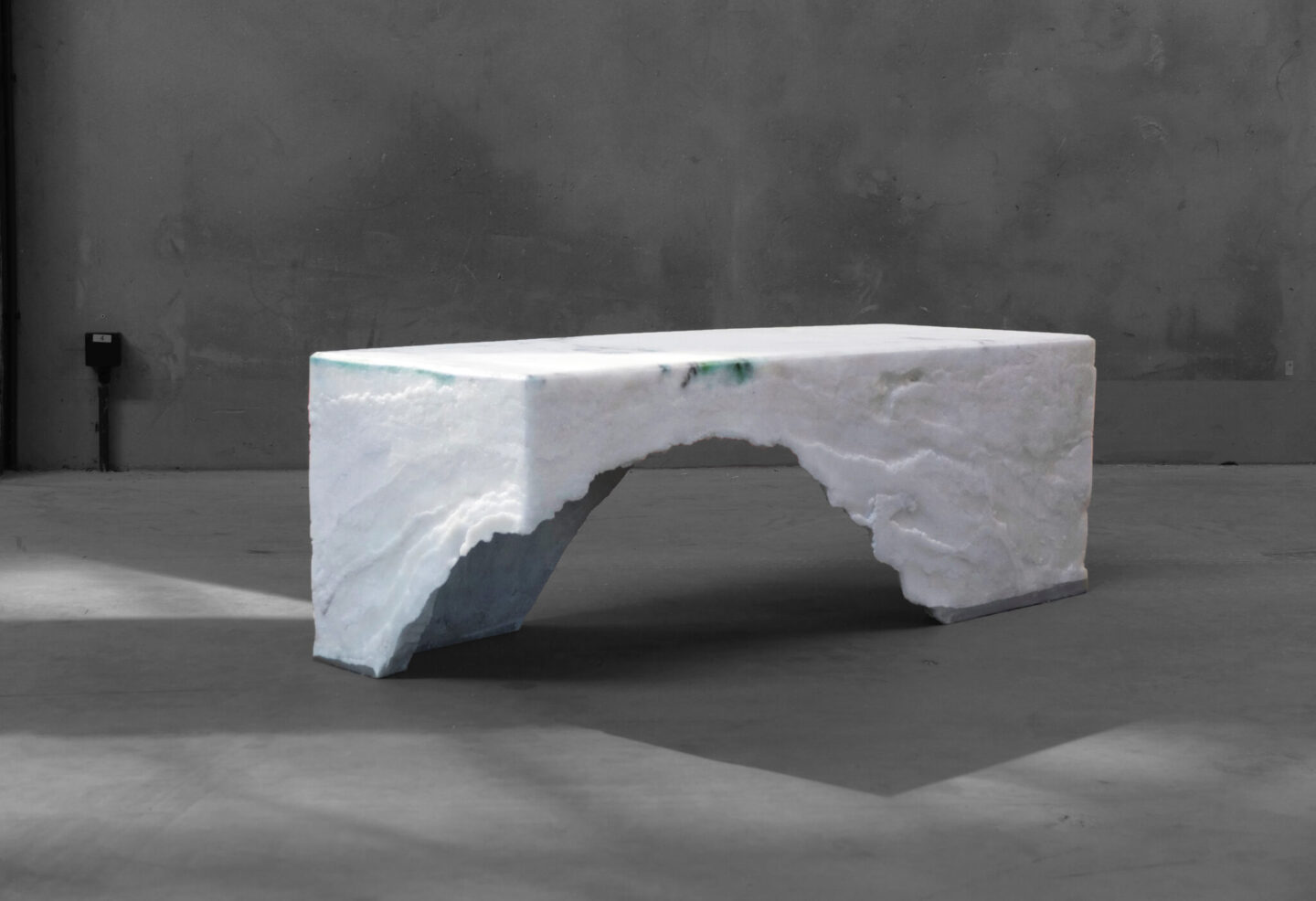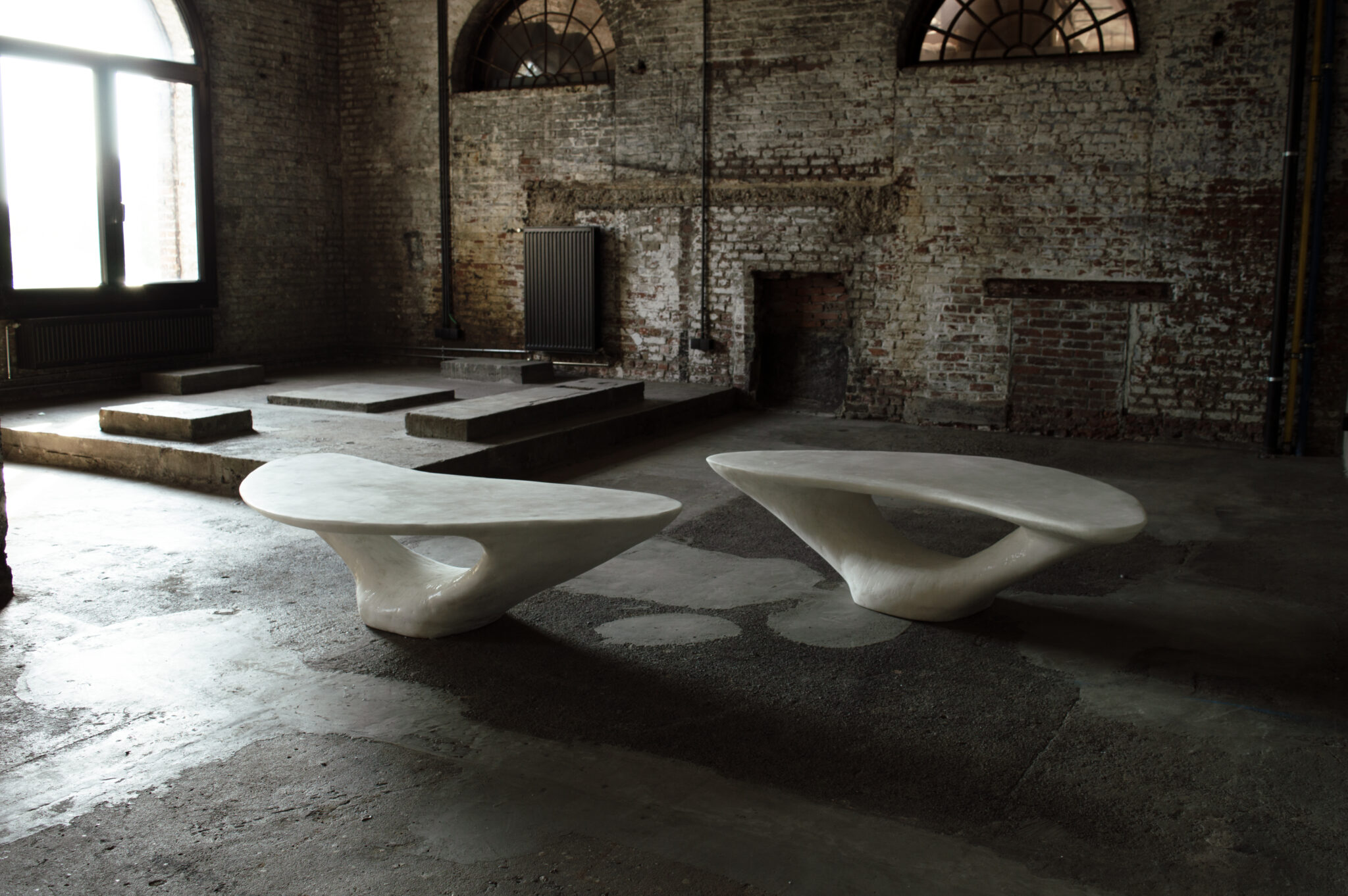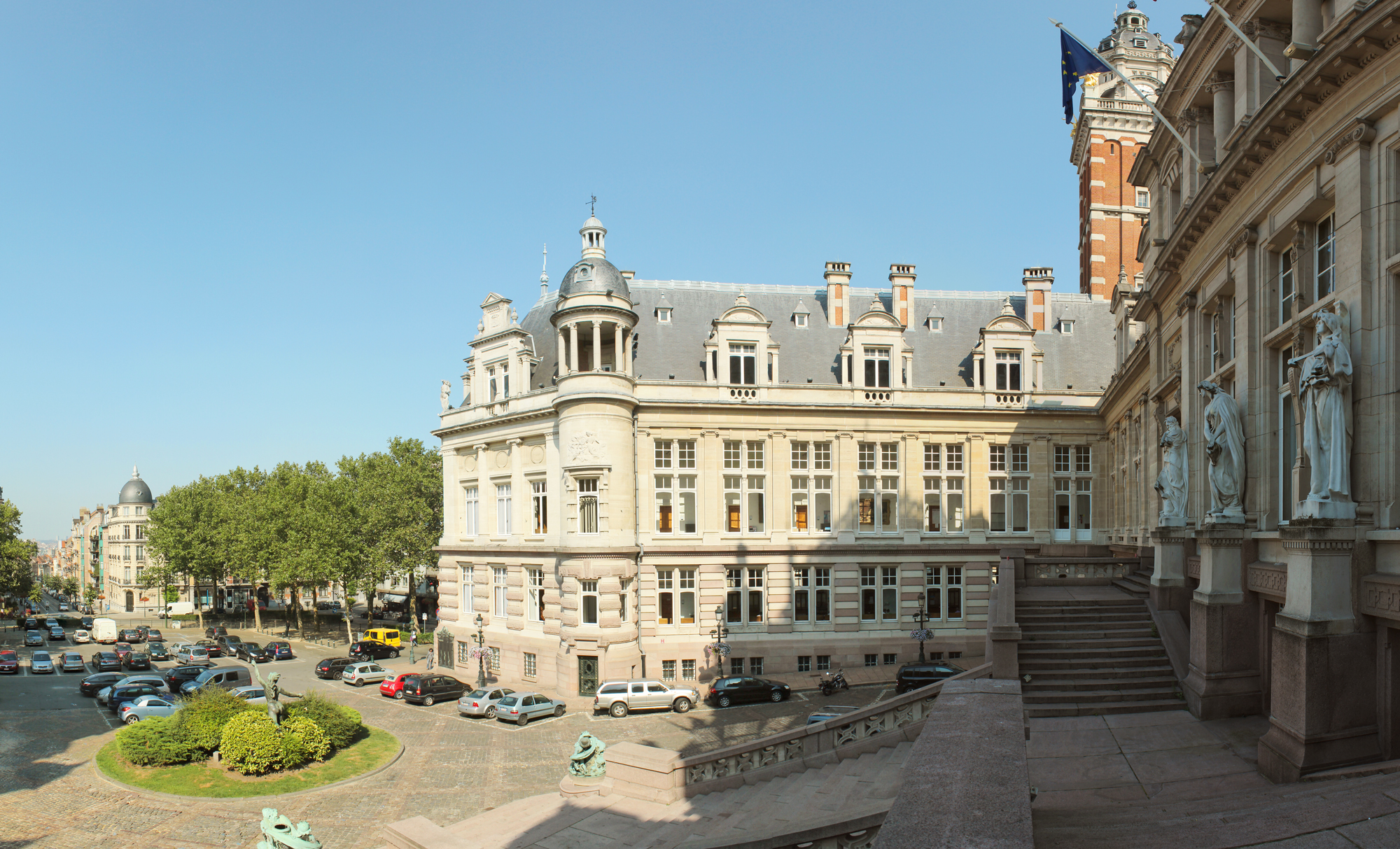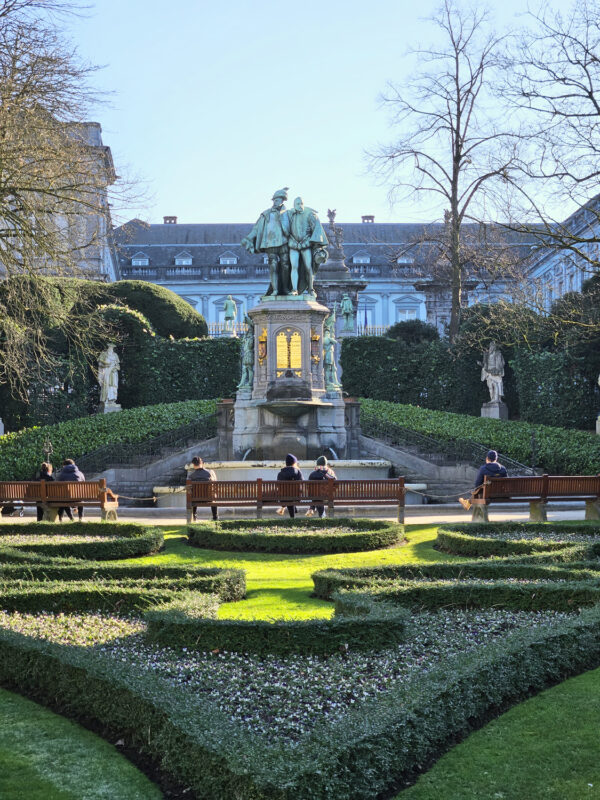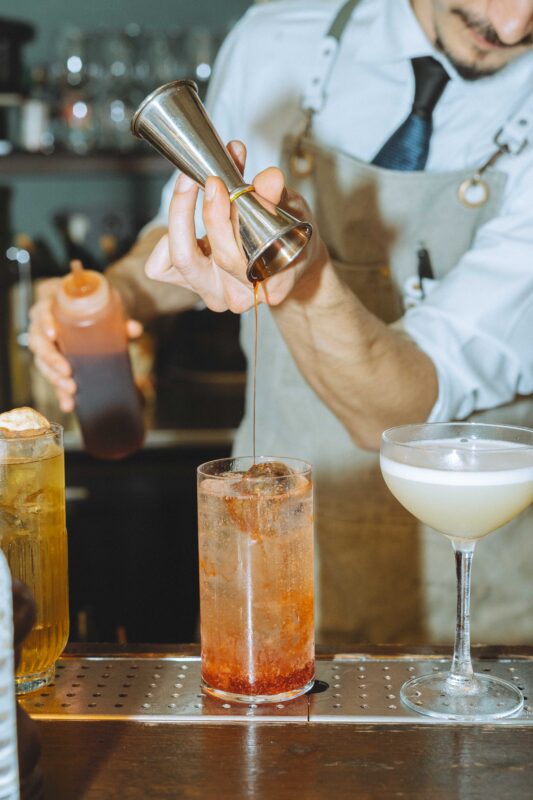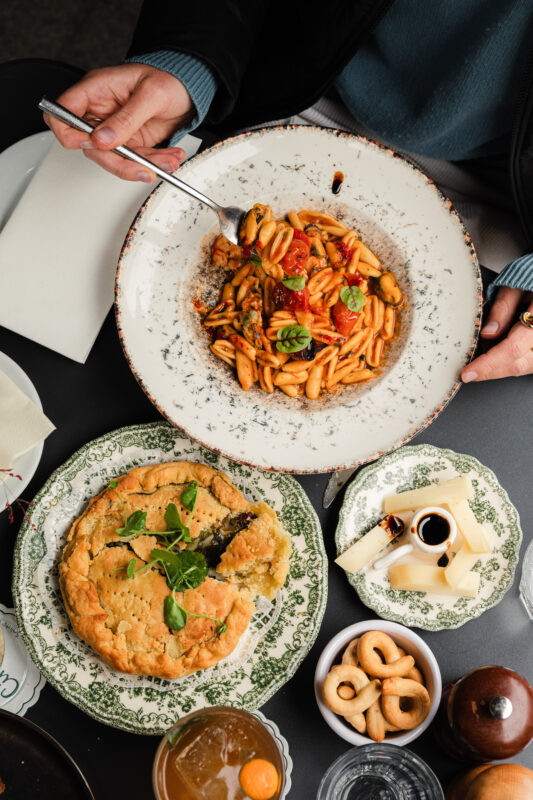Roxane Lahidji approaches design as an alchemical journey, transforming humble and overlooked materials into objects full of presence and meaning. She combines traditional craft techniques with low-tech methods, shaping and sketching simultaneously, allowing form and idea to evolve together in a fluid, intuitive process.
Her work reveals the hidden potential of everyday matter, turning it into surfaces and forms that feel both luxurious and unexpected. Through bending, molding, and careful experimentation, Lahidji creates objects that are tactile, poetic, and sustainable, challenging the way we perceive value and the act of making in the contemporary world.
© Roxane Lahidji
Which place do you currently call home and where do you work on your projects?
I’ve been living in Saint-Gilles, Brussels, for about six years now. That said, I don’t have a single place I call home—but many. Over the years, I’ve been based in Paris, Strasbourg, Eindhoven, and Brussels, and I often travel to Oslo, the South of France (Provence, where my family has a home), and Dublin, where my sister has lived for over ten years.
For me, “home” isn’t tied to one specific place or material setting. My experiences have taught me that stability and safety are something you cultivate within yourself, wherever you are.
My workshop is located in Zaventem Ateliers, a creative hub for designers and makers founded by architect Lionel Jadot. I moved there after leaving the Netherlands and have been evolving within this community for the past six years. In many ways, this place also feels like home.
Where is your studio located & how does it look?
My atelier is on the second floor, tucked into a sunny corner. The space measures about 90 square meters, with large windows that frame views of the surrounding trees.
At the heart of the studio stands a spacious wooden cabin, large enough to hold ten people standing. Inside, it houses the heating, ventilation, and dehydrating system—my drying chamber, where I place all of my pieces. Above it, shelves of boxes are filled with materials, while a window in front opens onto the corridor. At Zaventem Ateliers, every workshop has at least one corridor window, allowing visitors to peek inside and catch a glimpse of the creative process.
© David de Hagueneau
Are there any projects that are personally important to you—whether recently completed or currently in progress?
That’s a very interesting question. I have many projects I’ve started or am planning to initiate, each reflecting a different side of myself.
The artist in me is drawn to projects that search for meaning—whether through writing or sculptural statements.
The entrepreneur in me focuses on growing the studio, with the ambition of expanding into semi-industrial production of surfaces and small objects.
And the designer in me is excited by projects that present technical challenges or explore pure aesthetics, always experimenting with new materials.
In a way, I’m working on all of these dimensions simultaneously, processing them as part of one larger, interconnected practice.
© Lucile Dizier
© David de Hagueneau
© Courtesy of the artist
Do you have a favorite place in your area where you like to relax and linger?
Lingering is not really my specialty… When I want to relax, I usually exercise, go for a walk, read, or practice another creative activity such as drawing, cooking, gardening, or sewing.
Whenever I feel the need to get outside, I might take a walk in the woods of La Cambre, browse antiques in the Marolles, enjoy a glass of wine in the Sablons district, or have a picnic with a book in Tenbosch Park.
I have many cherished addresses, and I enjoy moving between them depending on my mood and the season.
© M0tty, Panoramique Hôtel de Ville Saint-Gilles, scaled, CC BY-SA 3.0
Are there any urgent political issues or problems in your region?
As in many places across Europe, the economic crisis is having wide-ranging social impacts, including rising insecurity and, almost inevitably, an increase in support for conservative and far-right movements. Whether this phenomenon should be considered an emergency is, however, a relative question.
In your opinion, what has developed well in the last 5 years—and what has not?
The city is undergoing noticeable renovations. Municipal authorities are making significant efforts to keep Brussels clean and modern, and the spread of gentrification has, to some extent, improved the quality of life and available resources.
However, crime rates remain high, unfortunately.
© Jopparn, Notre Dame du Sablon, adjusted colours, CC BY-SA 3.0
© TCsongor, Petit Sablon Park – statue, adjusted colours, CC BY-SA 4.0
Do you know a hidden gem when it comes to local manufacturers—whether it’s arts and crafts, sustainable products or food?
Not one in particular, Brussels is full and filled with hidden gems.
I would have too many addresses to give you and the list would still be considered exhaustive.
Is there anything particularly innovative in your region? Also in comparison to other places you have already visited?
I love Belgium for its diversity and its relatively successful integration of many cultures. The train system is remarkably convenient—within an hour, you can find yourself in the medieval heart of Ghent or strolling along the North Sea coast.
Brussels is a city of contrasts: culturally diverse, small yet rich, quiet yet explosive. I like to call it a “City of Pirates”: you never know what’s happening or who you’re talking to. Everything feels possible, but you must always stay alert.
Do you have a secret restaurant tip that you would like to share with us?
If I tell you, won’t be a secret anymore, will it?
But I can reveal one: there’s something special about Cipiace—beyond the food and the cocktails, it’s the feeling of belonging, as if it had always been part of our own family.
© CiPiaCe
© CiPiaCe
Is there a local shop whose products are only available in your region?
You’ll find most of it in the Marolles district of Brussels: old and noble Belgian antiques, as well as new and contemporary concept stores showcasing all kinds of independent creators. Of course, there are many other places to explore, but starting with the Marolles is always a good idea.
What are your 3 favourite apps that you use every day and couldn’t live without?
I hate the idea of depending on my phone, yet I am using those three apps regularly:
Instagram keeps me updated with the latest trends and how my fellow designer friends are doing. it is also a great tool for communication.
Vinted is where I can find almost any item of clothing or accessories for half of its price simply because it was pre-purchased.
Deezer has all of my playlists and is capable to save a day that started on the wrong foot.
© Flocci Nivis, 20180907 Church of Our Blessed Lady of the Sablon Brussels 01, adjusted colours, CC BY 4.0
Do you have any favourite newspapers or online magazines? And how do you keep up to date with politics or social and cultural issues?
I honeslty get a lot of news through social medias. After hearing the first headlines and whenever I am interested I dive deeper on different platforms such as the NY Times online, Mediapart for a french version or the BBC, Al Jazeera etc.
I do not close myself to any media and it is very important for me to understand the information from different perspectives and actors.
Whenever I am truly interested in a topic I love listening to documentaries on YouTube or podcasts such as the Diary of a CEO (EN) or Thinkerview (FR).
One last question: If you could choose another place to live—regardless of financial or time constrains—which one would you choose?
Probably by the Como Lake in Italy.
